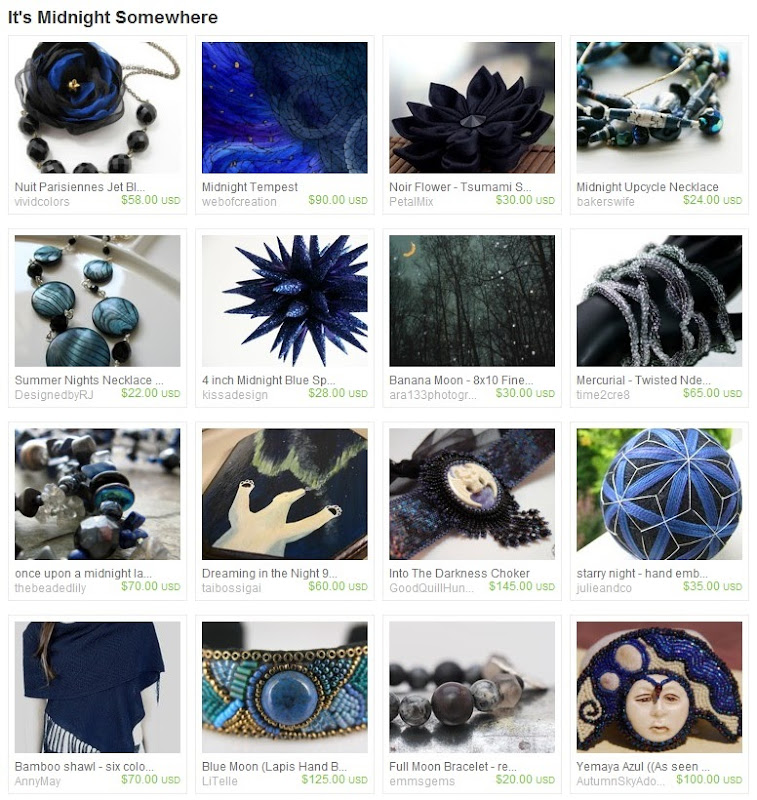
Ring # 16 - Rubies and Cream
As a beaders, learning and growing as artists is a never-ending process. There will always be something new to practice or develop, and our designs evolve as our skills do. On the many beading boards and forums, newcomers will often ask their peers, “How do you come up with your unique designs?”. The answer is simple: 2 parts practice to 1 part experimentation.
Not coincidentally, the same answer can be given if someone asks “Why you would buy a PDF tutorial or project magazine, if you can’t sell the designs you make from them?”. When an artist shares their expertise, it is meant to offer new ways to perfect our knowledge of techniques and materials.
One of the easiest ways to explore the possibilities of bead weaving techniques is to add simple embellishments. A little fringe here, a change of bead style there, and suddenly you know a little bit more about what your beads and hands can do.
Adding bridges to flat Ndebele weave is one of my favorite basic embellishments. It’s easy to do, and incredibly versatile, because you can use it with all kinds of beads. Even beads that aren’t always suitable for bead weaving, like bugles and crystals, are perfect for adding to a herringbone bridge.

To embellish flat herringbone with a bridge:
First begin by making a base with simple herringbone weave. I prefer to start with a double bead ladder. This creates a much neater first row by reducing the number of thread passes at the bottom of the beadwork.
On a comfortable length of beading thread, pick up 4 seed beads. Slide them down the thread, leaving at least a 6 inch tail. Stitch up through the first 2 beads again, and pull tight to create a pair of 2 bead stacks, side by side. Stitch down through the 3rd and 4th beads again, so that both threads are exiting from the bottom of the beads.
To help snug up the beads and create even tension for the rest of the ladder, try this trick: Hold both the tail and working thread securely with your thumb and forefinger. Place your thumbnail up against the bottom of the bead stacks. With your other hand, hold the working thread, and pull down as you press the bead stacks against your opposite thumb. Tug the thread gently until the beads are straight, and there is no slack thread within the beadwork.

Pick up 2 seed beads, and stitch down into the 3rd and 4th bead from the previous step again. As you add new beads to the ladder, your needle will always chase the working thread. Pull tight, and stitch up through the two beads just added.
Continue adding pairs of beads to the ladder until it is the desired width for your design. You will need an even number of bead stacks to begin the herringbone weave.
To start the first row, you will need to Step Up. Stitch up through the lower bead on the previous stack, and up through the top bead on the last stack, so that your thread is exiting from the end bead at the top of the ladder.


Pick up 2 seed beads, and stitch down through the top ladder bead from the previous stack. Pull tight, making sure that the two new beads each sit flat on top of the bead ladder. Stitch up through the top ladder bead in the next stack. You can work from left to right, or right to left - whichever you are most comfortable with. As you add new rows, you can flip the beadwork to position the working thread on whichever side you prefer.
Pick up 2 seed beads, and repeat the process along the entire length of the bead ladder. After adding the final 2 beads, Step Up to begin the next row.

When you reach the point in the beadwork where you would like to add a bridge, add one pair of seed beads. Before stitching up to add the next pair, pick up one seed bead. Continue stitching normally for the rest of the row.
When you reach the increase again, pick up 2 seed beads, placing them between the rows as before. Add 3 beads at the increase in the next row. Continue adding 1 bead at a time to the bridge until it reaches the desired width.
To decrease and return to regular herringbone, reduce the bridge by 1 bead in each new row. After adding the final, single bead, you can continue with flat herringbone and finish the piece as desired.

Bridged herringbone makes a great base for beadwork bracelets or rings, and is one of my favorite techniques. You can add your favorite beads easily by exchanging them for an equal length of seed beads when the bridge reaches the appropriate width. For today’s Ring a Day project, I used the basic technique, and replaced some of the seed beads with CRYSTALLIZED™ - Swarovski rubies.
Copyright 2010
Inspirational Beading and The Sage's Cupboard




















